

Max Davies
2025 Toyota Corolla SX review
5 Days Ago
Not content to leave the small SUV segment uncontested, Volkswagen has lobbed two models this year. The T-Cross is the brand's smallest SUV but it's big on space.
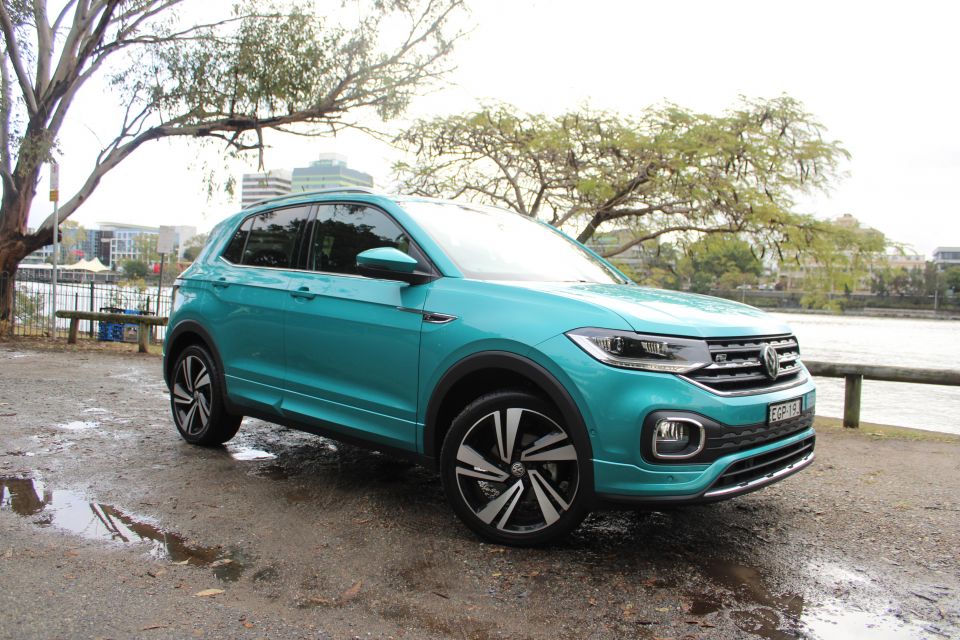
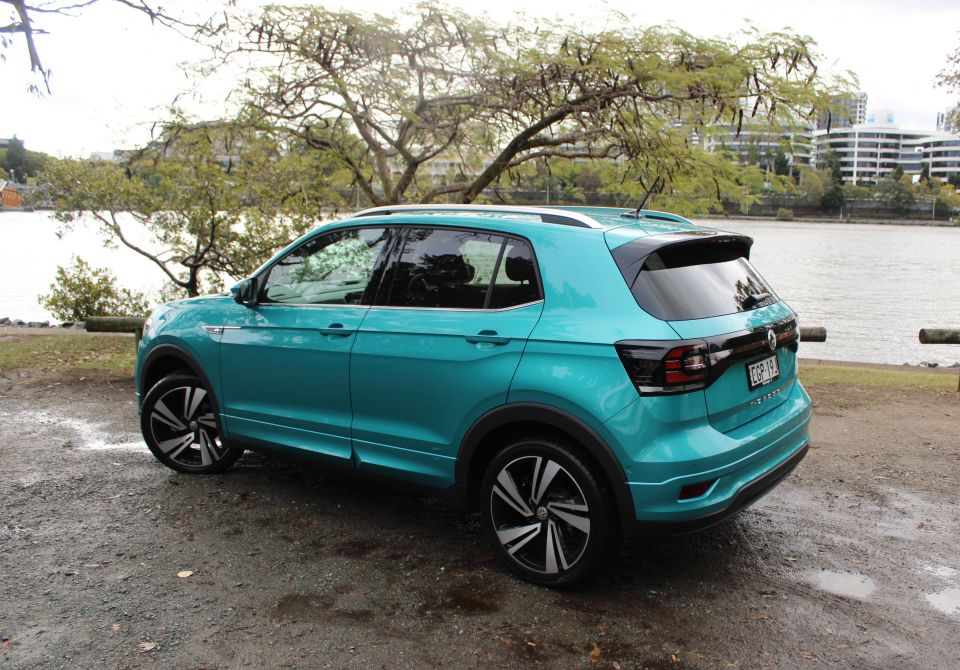

News Editor
New from
$27,990
excl. on-roads

News Editor
New from
$27,990
excl. on-roads


News Editor
New from
$27,990
excl. on-roads

News Editor
New from
$27,990
excl. on-roads
Quickly see how this car stacks up against its competition. Select any benchmark to see more details.
Where expert car reviews meet expert car buying – CarExpert gives you trusted advice, personalised service and real savings on your next new car.
Volkswagen has belatedly entered the Australian small SUV segment this year with two different models, both based on the company’s MQB architecture. The T-Cross is the smaller of the two, closely related to the Polo light car and its ‘MQB A0’ chassis.
Small SUVs are hot property, last year accounting for 13.1 per cent of the Australian market – placing them behind only four-wheel drive utes, small passenger cars and mid-sized SUVs. Technically the T-Cross is classified as ‘Light’ by VFACTS, but from an interior practicality and price perspective it’s competitive with the Small SUV class.

It’s a diverse segment Volkswagen finds itself in. There are the more budget-focused models such as the Haval H2, Mitsubishi ASX, Hyundai Venue, MG ZS and Suzuki Vitara, with entry prices closer to $20,000.
Mitsubishi also has the more stylish Eclipse Cross, which faces up with trendy crossovers like the Nissan Juke and Toyota C-HR around the $30,000 mark, while more practical options in the segment include the Honda HR-V, Hyundai Kona, Kia Seltos, Mazda CX-3, Nissan Qashqai, and Subaru XV.
Throw into the mix lower-volume European models like the Citroen C3 Aircross, Fiat 500X, Peugeot 2008, and upcoming Renault Captur, and you have a truly astonishing level of variety in the competition the T-Cross is up against.
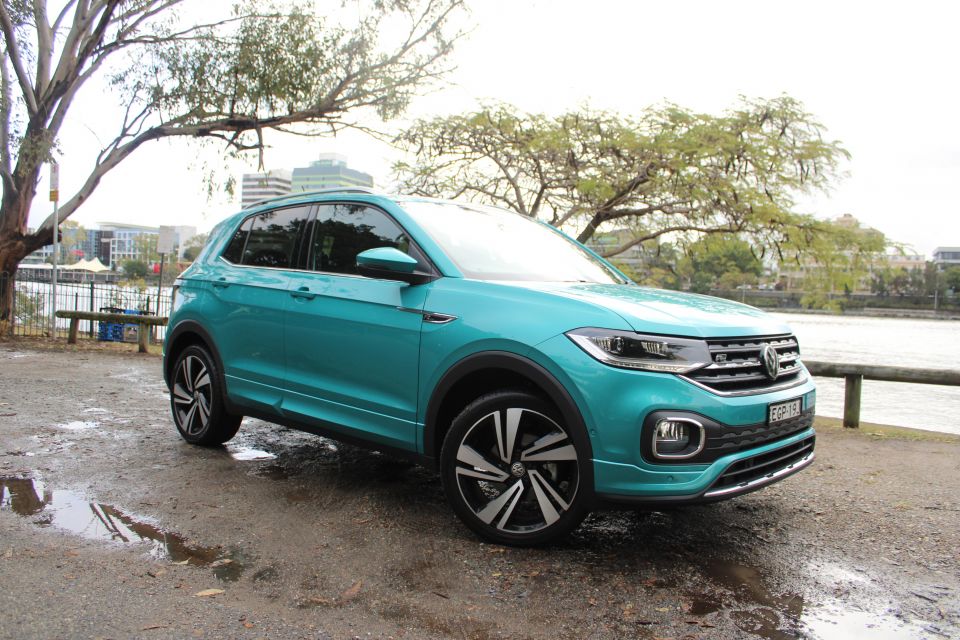
A starting price of $27,990 before on-road costs for the 85TSI Life variant sits in line with the larger Kona, Seltos, and Qashqai, though the 4108mm T-Cross is closer in size to the Vitara and Venue. The 85TSI Style featured here starts at $30,990 before on-road costs.
Metallic paint is a $600 option on the T-Cross but you’ll pay $800 for this model’s hero colour, Makena Turquoise. Trust me when I say it’s worth it.

In photos, it looks like it’s a pink-and-yellow squiggle decal away from looking like a mid-1990s Hyundai Excel – remember when every car seemed to offer a teal or turquoise?
In person, however, it’s stunning and attention-grabbing. Credit to Volkswagen for offering a colour beyond the basic palette most cars offer these days.
Our tester came fully loaded with both available option packages: the $1900 Sound and Vision package, and the $2500 R-Line package.
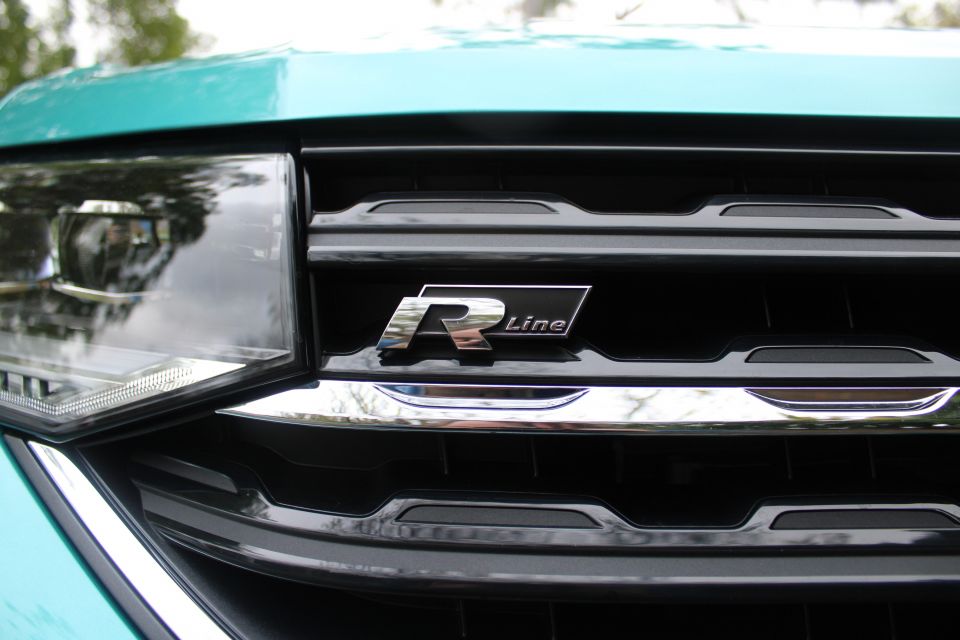
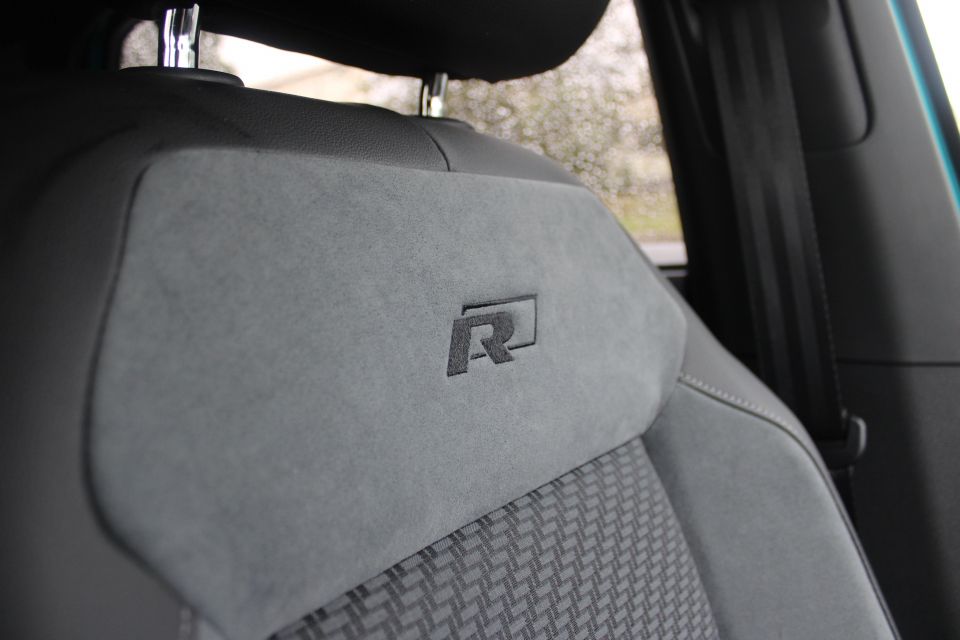
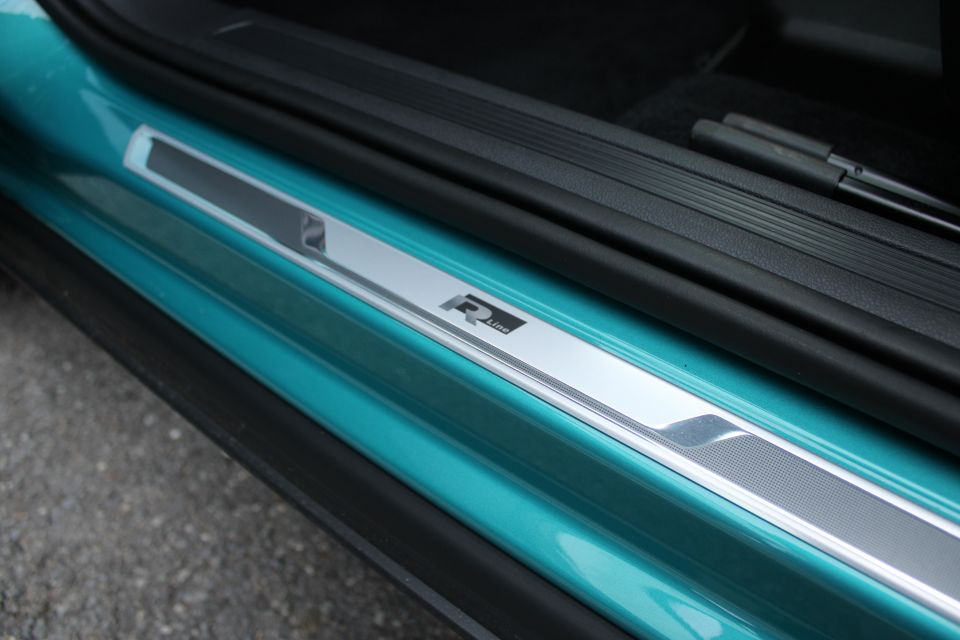
Buy your new car without the stress. It's fast, simple and completely free.

Great service from Travis and team, second time I have used this business would not hesitate to recommend them to anyone
Craig C.
Purchased a Ford Ranger in Sunshine Coast, QLD
CarExpert helped Craig save $7,224 on his Ford Ranger, now let us save you on your next new car.
Get your BEST priceThe $1900 Sound and Vision package adds a 300W Beats premium sound system, 10.25-inch Digital Cockpit and satellite navigation, while the $2500 R-Line package adds 18-inch alloy wheels, a bodykit, and some sportier trimmings inside.
Frankly, we think the $1900 is well spent but the R-Line package is a bit expensive. The T-Cross is still a sharp-looking SUV with its standard wheels and sans body kit.
It’s fairly well-equipped, too. The Style features dual-zone climate control, power-folding exterior mirrors, proximity entry with push-button start, paddle shifters, adaptive cruise control, semi-autonomous parking assist, and ambient lighting. There’s also LED headlights and daytime running lights, but the cornering lights are halogen.

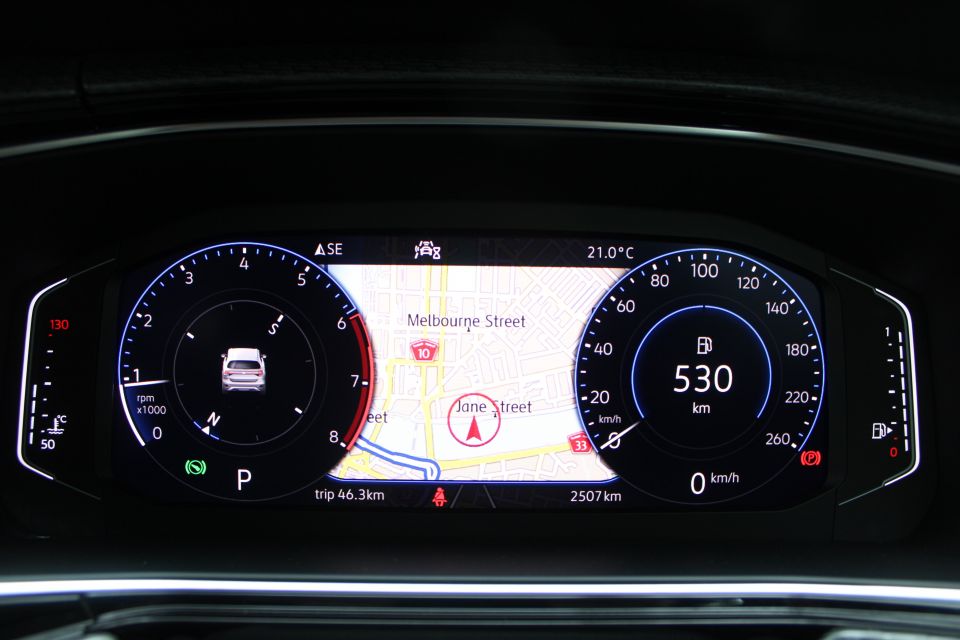
That’s in addition to the base Life’s roster of kit, which includes an 8.0-inch touchscreen infotainment system with Android Auto and Apple CarPlay, wireless phone charging, automatic headlights, rain-sensing wipers, a leather-wrapped steering wheel, and a reversing camera with front and rear parking sensors.
Standard safety equipment is comprehensive and includes blind-spot monitoring, rear cross-traffic alert, autonomous emergency braking with pedestrian and cyclist detection, lane-keeping assist, lane-departure warning, as well as front, front-side and curtain airbags plus a driver’s knee airbag.
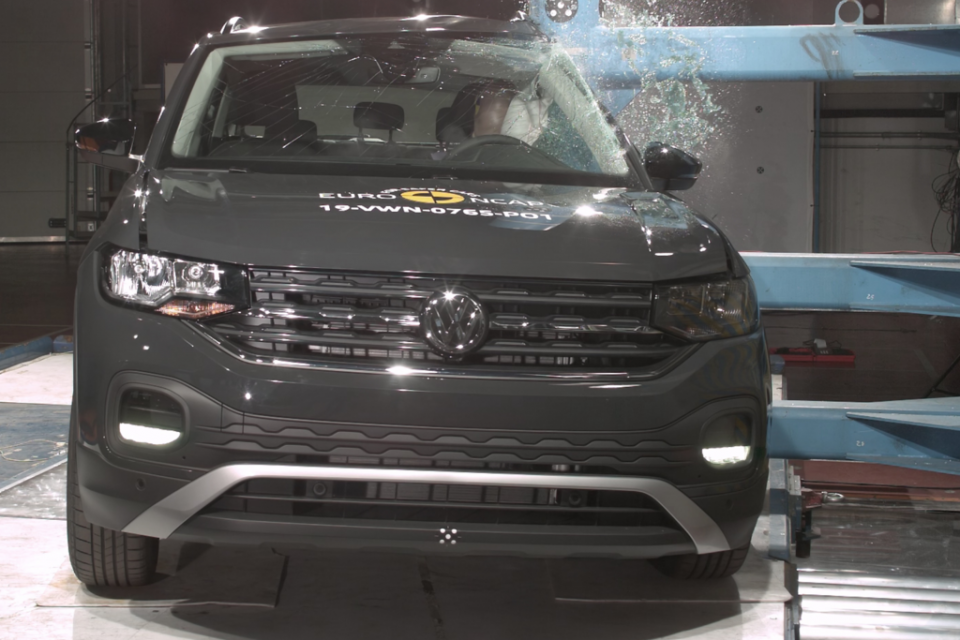
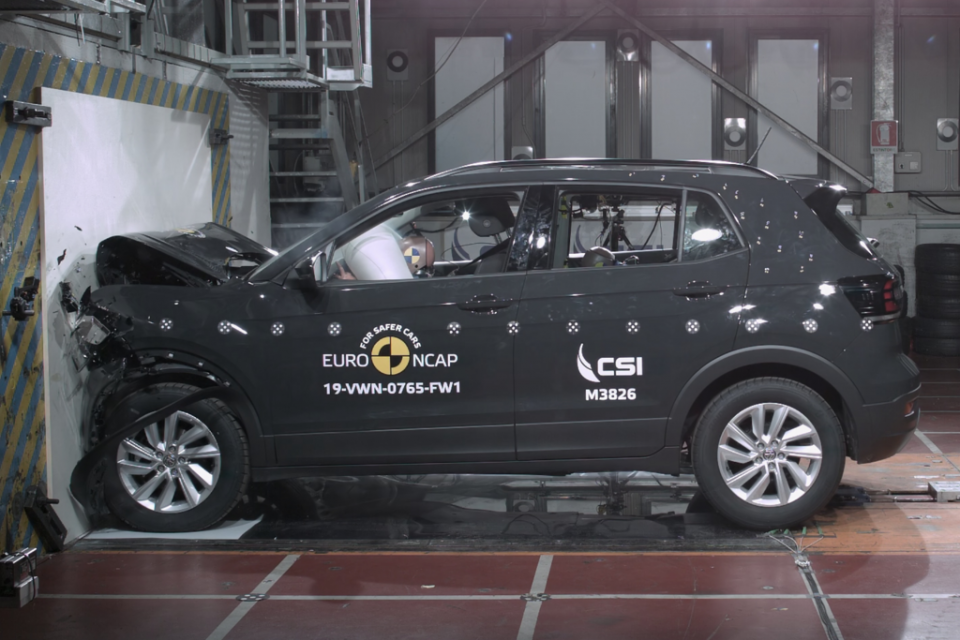
The T-Cross has a five-star rating from ANCAP. That’s based on Euro NCAP testing conducted in 2019, where it received an adult protection score of 97 per cent, a child occupant protection score of 85 per cent, a pedestrian protection score of 81 per cent, and a safety assist score of 80 per cent.
The ANCAP report features a lot of green, though in frontal crash tests ANCAP found protection for rear passenger chests and the front-seat passenger’s legs to be only adequate and driver leg protection marginal.
The autonomous emergency braking works at speeds between 5 and 250km/h for moving vehicles including bicycles, 5 and 85km/h for moving pedestrians, or 5 and 65km/h for pedestrians and cyclists crossing the street.
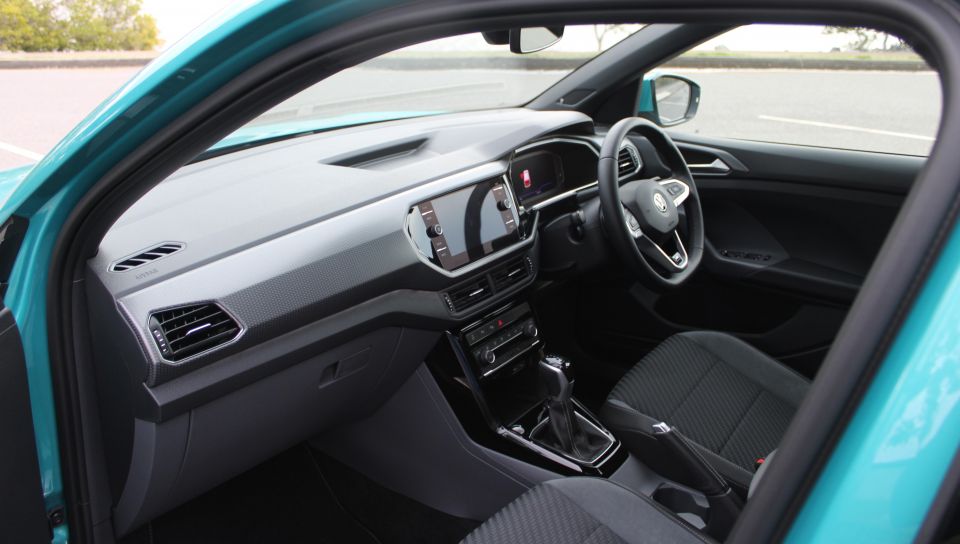
The T-Cross may have Polo underpinnings but it’s priced up against mid-spec small cars like the Golf. Despite this, its interior furnishings are Polo-grade. That means there isn’t a bit of soft-touch plastic to be found in the cabin, despite the Polo getting a squishy dashboard.
The overall design of the interior is innocuous enough – it looks like a typical Volkswagen interior, with a clean design, solid ergonomics and good assembly quality. But its hard, scratchy plastics are on full display and are perhaps more bothersome given the lack of colourful contrasting trim like that available on the Nissan Juke.
The T-Cross’s cabin is fifty shades of grey, and not in the fun way.
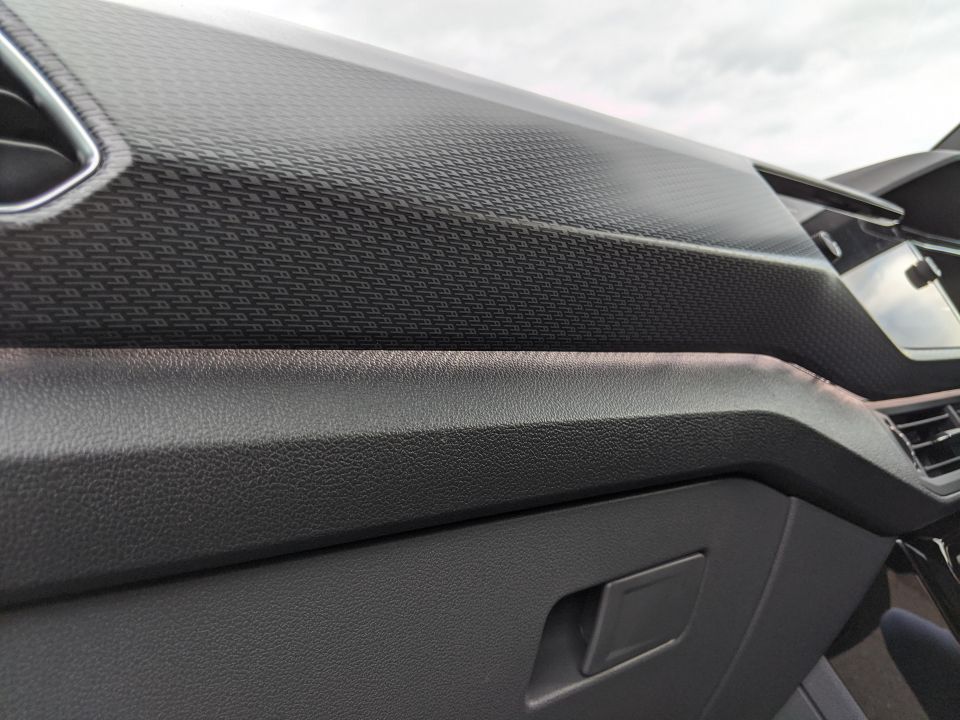

There are two aspects of the T-Cross’s cabin that help class it up a bit. One is the cloth upholstery of the comfortable seats which, while monochromatic, is easy on the eye. The other is the strip of ambient lighting across the dash. It’s subtle but superbly elegant and instantly improves the ambience. There’s even some subtle footwell lighting, too.
Volkswagen’s Digital Cockpit never fails to impress passengers, and the 10.25-inch instrument cluster is clear and informative. Even if the maps look a little “old Refidex”, the ability to project them across the entire instrument cluster is a party trick rivals can’t match.
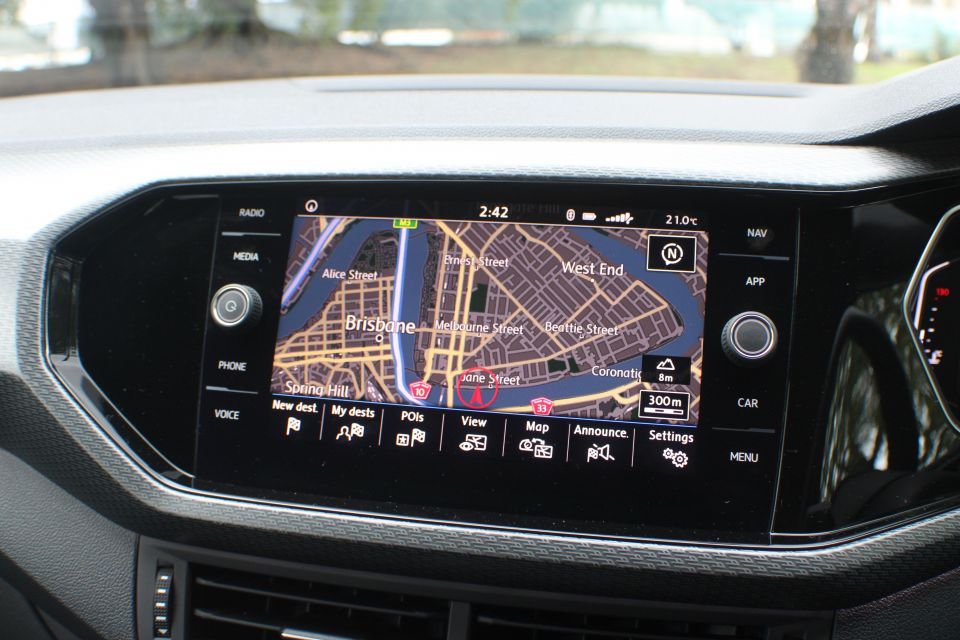
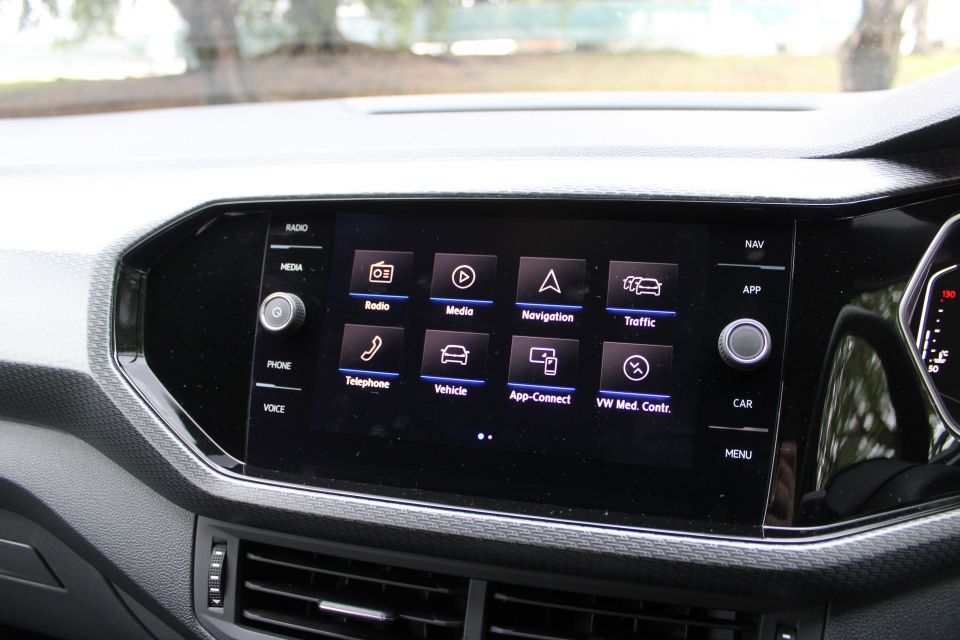
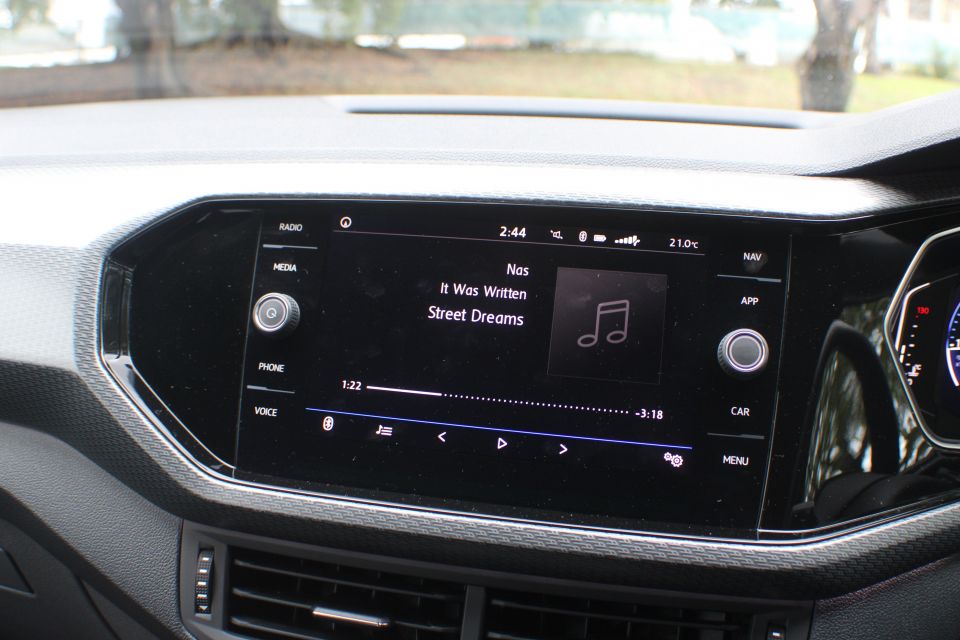
In terms of presentation (if not tactility), the T-Cross’s cabin is hard to fault but for one small gaffe. The T-Cross uses red backlighting for its climate control buttons, start button and shifter but white lighting for the climate control display, steering wheel and buttons by the touchscreen. It may seem minor but it looks a little disjointed at night.
In contrast, the 8.0-inch touchscreen infotainment system boasts a consistently premium look, as well as quick response times, good navigability, and standard satellite navigation, Android Auto and Apple CarPlay.
We also like being able to view vehicle information like fuel economy on a large touchscreen instead of in the instrument cluster. There’s a voice activation button on the steering wheel but it alerts you to contact a dealer to obtain a key, though it activates Siri or Google Assistant when connected to smartphone mirroring.
The optional 330W Beats premium sound system is an absolute banger, comparable in quality to the eight-speaker Bose system in the more expensive Kia Seltos GT-Line. The bass, in particular, is excellent.
Storage is mediocre, however. The front cupholders are on the smaller side and oddly shaped, and there’s no sunglasses holder. The centre console bin is also quite small – you’d struggle to fit most smartphones in it, let alone a typical purse. On the flip side, the in-door bottle holders are impressively large.
The cabin itself is impressively large, too. Though dimensionally the T-Cross is one of the smaller SUVs in its class, you wouldn’t know it from the inside due to its superb packaging. An 180cm tall passenger can sit behind an 180cm tall driver with room to spare, enjoying ample legroom and headroom.

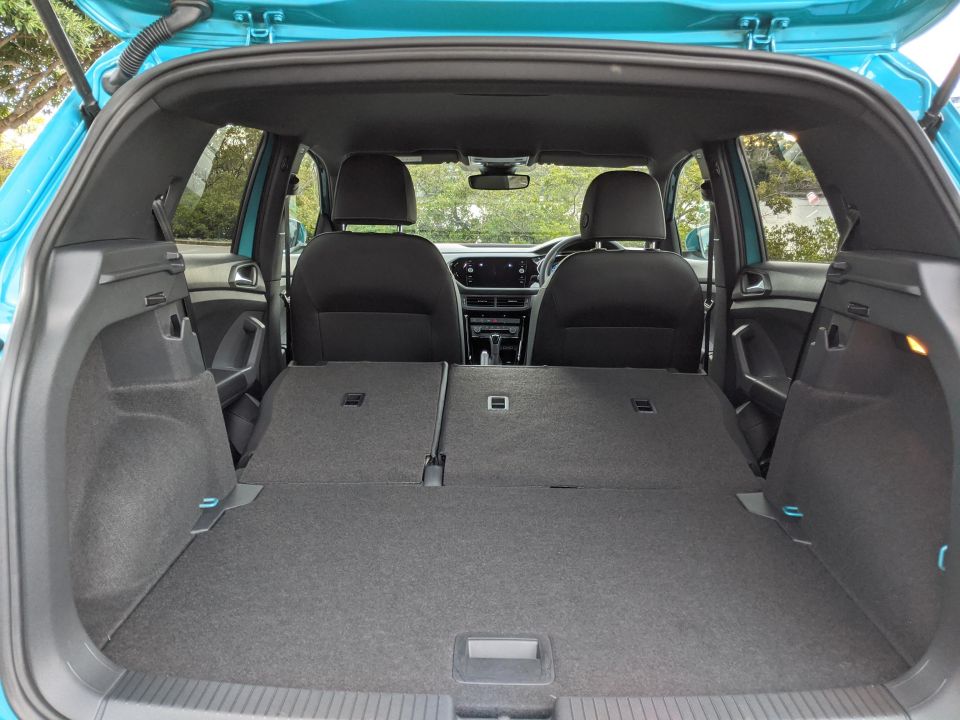
There’s also a fairly commodious boot for this class – it measures 385L, but you can slide the second row forward to expand that to 455L and fold it flat to yield a total cargo volume of 1281L. A space-saver tyre sits underneath the boot floor.
A hospitable back seat and a decently-sized boot isn’t a given in this class but the T-Cross’s upright profile results in a spacious, airy and functional cabin.
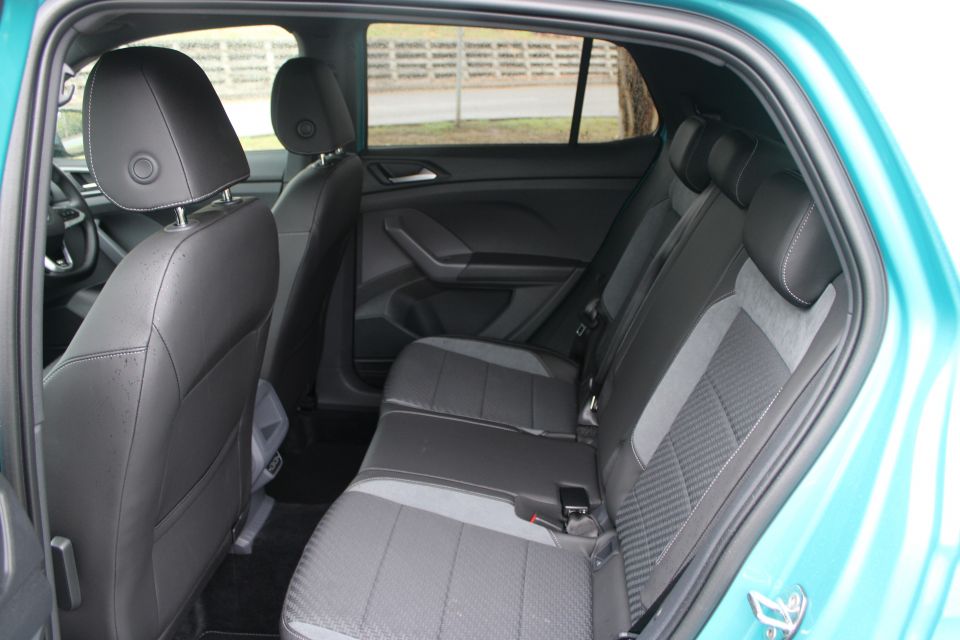
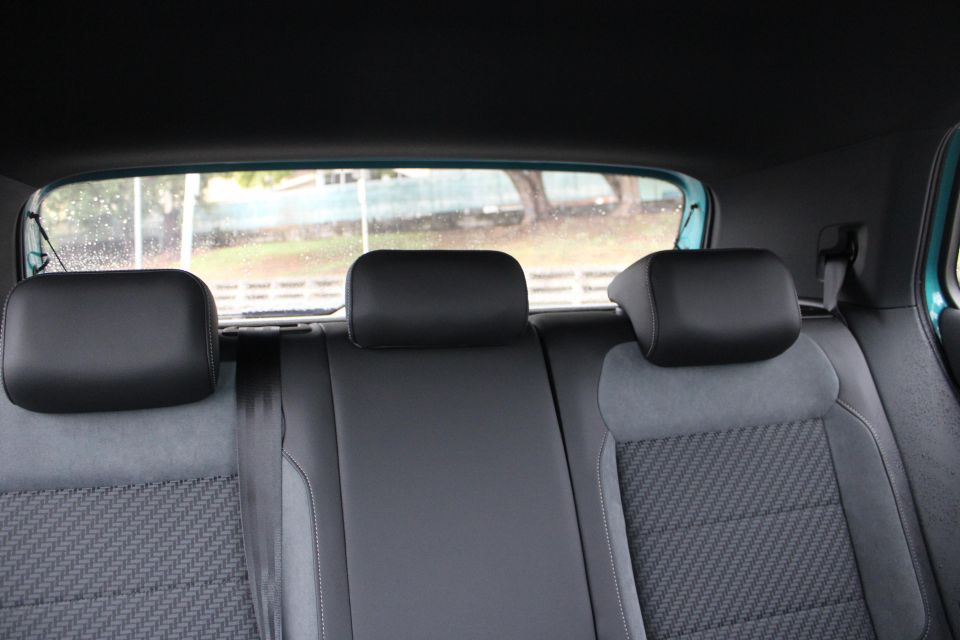
If you compare the T-Cross to a Kia Seltos – an SUV that’s 262mm longer – there isn’t a significant difference in rear seat comfort, while the Seltos’s boot has 433L of luggage space.
In terms of child seats, the T-Cross is fitted with lower ISOFIX points on the rear outboard seats and top tether anchorages for all rear seating positions.
Rear seat occupants don’t, however, have their own vents, with an open cubby sitting where vents would usually be. Fortunately, below that are two USB charging points.
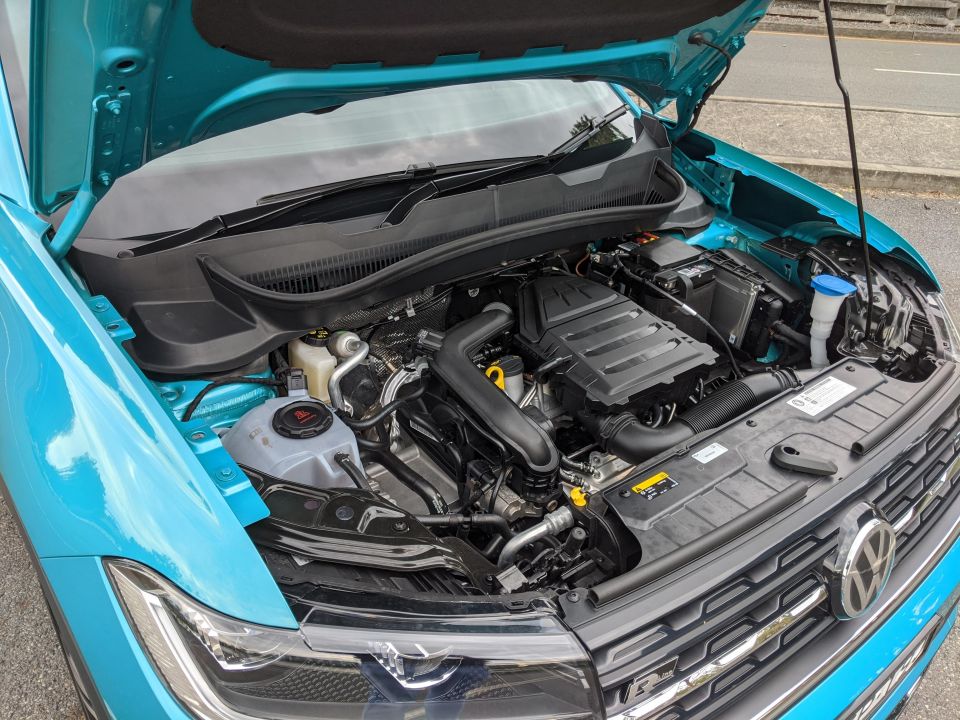
The only powertrain available in the Australian-market T-Cross is a turbocharged 1.0-litre three-cylinder petrol engine producing 85kW of power and 200Nm of torque.
It’s mated to a seven-speed dual-clutch automatic transmission as standard, and Volkswagen quotes a 0-100km/h time of 10.2 seconds.
The T-Cross is available only with front-wheel drive, which isn’t uncommon in this segment. The Nissan Juke is another FWD-only small SUV, as are the Mitsubishi ASX and Honda HR-V.
Likewise, a small turbocharged three-pot is increasingly common in competitors such as the Juke.
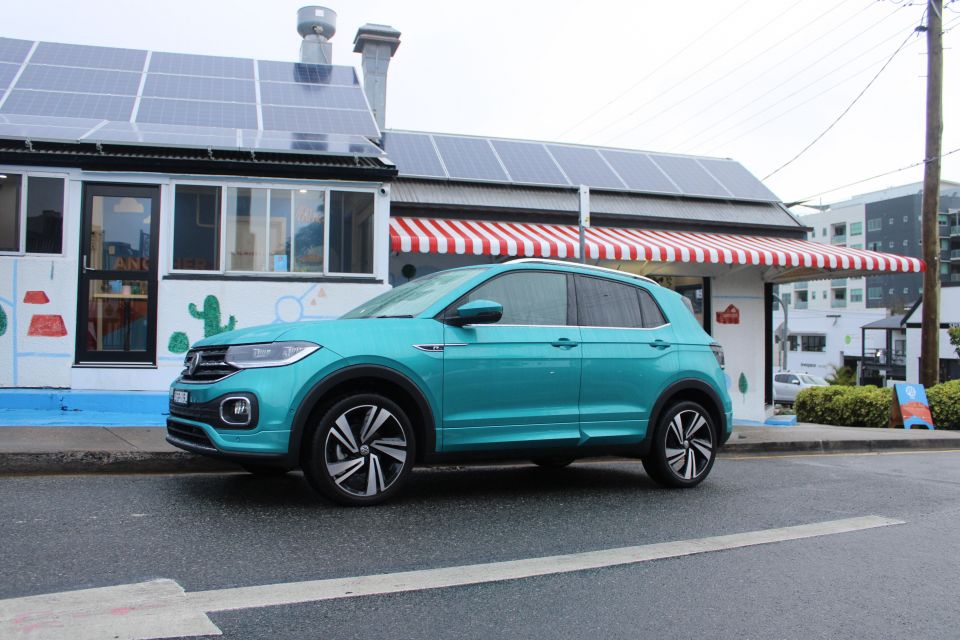
Where expert car reviews meet expert car buying – CarExpert gives you trusted advice, personalised service and real savings on your next new car.
The T-Cross’s turbocharged three-pot is spunky. There’s plenty of power for darting around town and it doesn’t feel strained on the highway.
All the while, there’s a thrummy engine note common amongst three-cylinder units. It isn’t too obtrusive and it sounds more pleasant than some of the strained sounds emanating from rivals with naturally-aspirated four-cylinder engines.
The engine may say it’s play time but the chassis says no running inside the house. That’s not to say the T-Cross is bad to drive – not by a long shot.
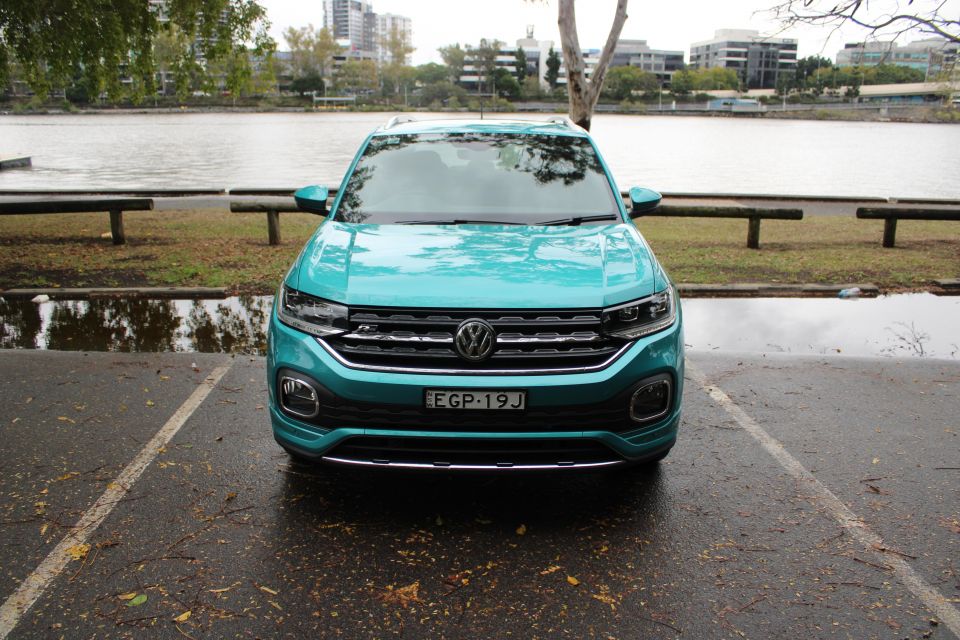
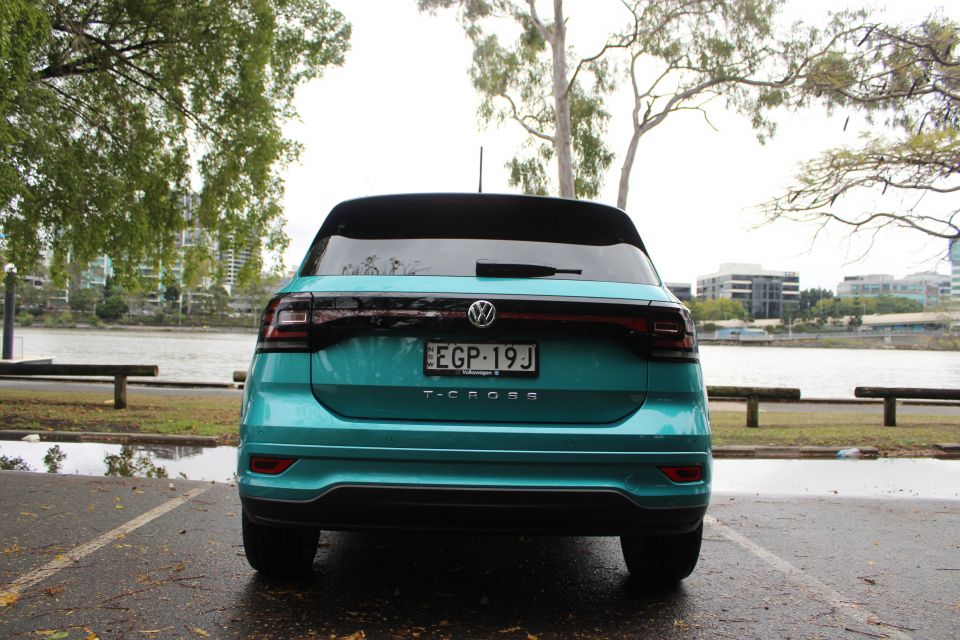
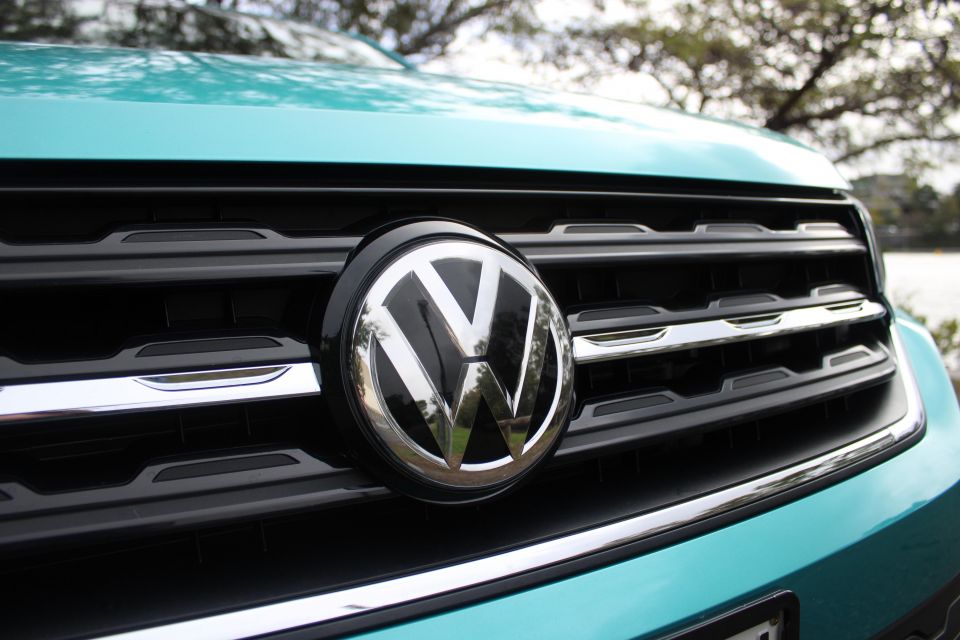
Still, this is a small SUV and there’s the safe understeer and slightly top-heavy feeling common in this class of car, with some body roll around corners. This powertrain would be more satisfying in a small hatch like the Polo, which offers 70kW and 85kW tunes of this exact motor, but overall the T-Cross comports itself well among its cohort.
There’s a slight delay off the line with the seven-speed DSG but it doesn’t prove too bothersome and the dual-clutch furnishes snappy shifts once you’re up to speed. The only issue we encountered with the transmission was its tendency to avoid downshifting on steep grades – sometimes, we’d find it chugging up a hill in fourth or fifth gear. There are paddle shifters behind the wheel if you want to take over.
The steering wheel is a wonderfully chunky, leather-wrapped thing to hold and the steering itself is direct and fairly well-weighted. You’ll feel the lane-keeping assist nudging you back in your lane, and the system is pretty competent.
The 18-inch wheels look flash but they result in a firmer ride than the base Life with its 16-inch alloys. The T-Cross Style falls short of being uncomfortable, however, and bumps and crags are dispatched without much fuss.
The T-Cross doesn’t transmit too much road and wind noise into the cabin, even at high speeds. Refinement isn’t peerless, however. The three-cylinder engine, which lacks balance shafts, does transmit some vibration into the cabin, even under light acceleration.
Your mileage may vary, but we believe a little vibration is better than a strained engine sound and a lot of road and wind noise.
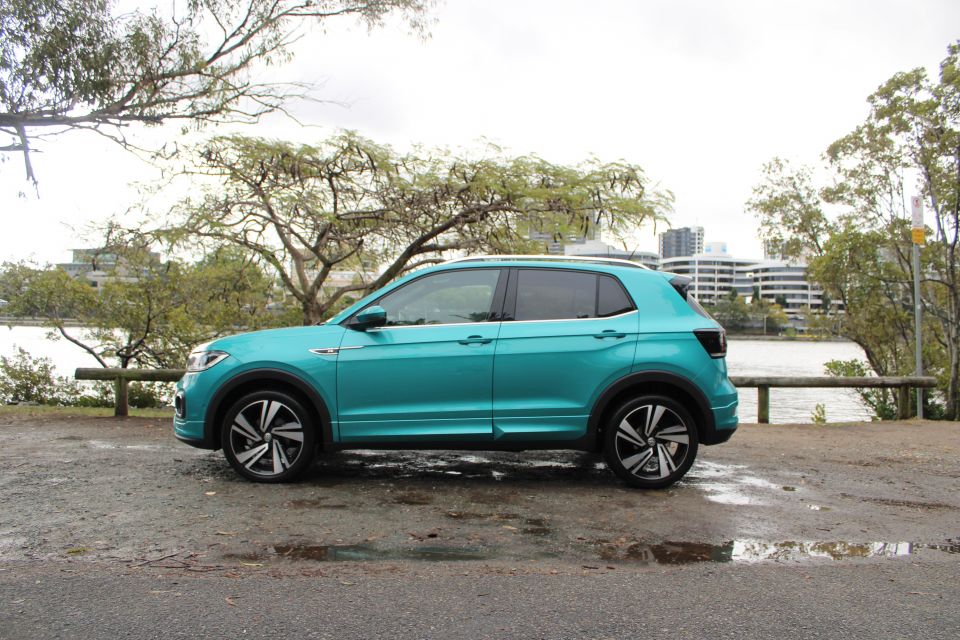
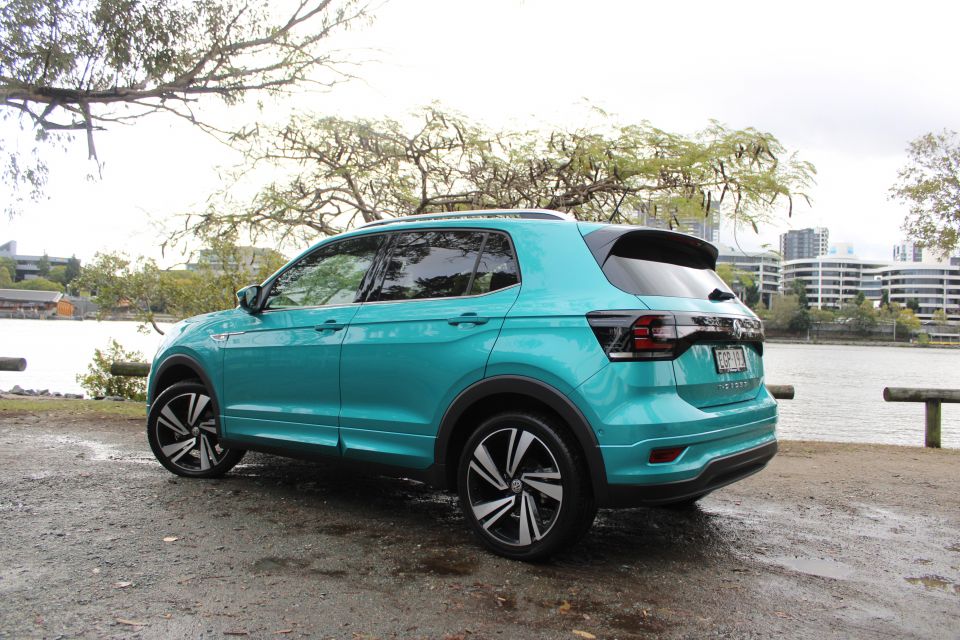
There is one aspect of the T-Cross which consistently annoys, however: the automatic stop/start. It’s overly aggressive, cutting the engine even when you’re on a grade or edging through an intersection.
We’d love to see a level of customisation for this technology like you see for cars with adaptive suspension rather than just toggling between on and off. Cutting down on emissions while idling is extremely important, but the T-Cross’s system just goes too far.
Volkswagen claims the T-Cross consumes 5.4L/100km on the ADR combined cycle, or 6.0L/100km in the city and 5.0L/100km on the highway.
Surprisingly, we averaged 8.8L/100km, albeit in mostly city driving. We know it’s capable of better, however – in a more consistent mix of city and highway driving in an 85TSI Life, we averaged 6.7L/100km.
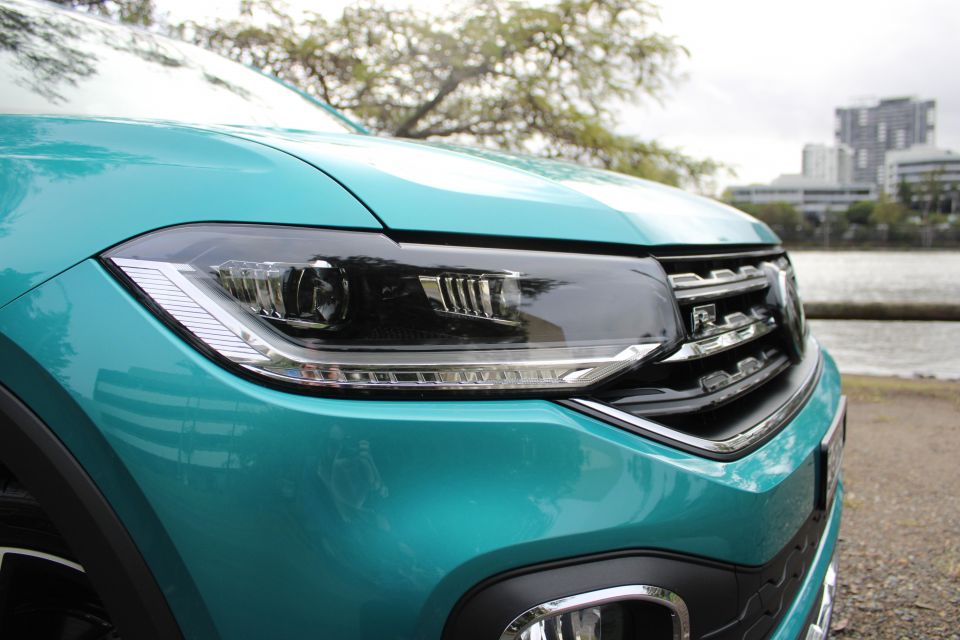
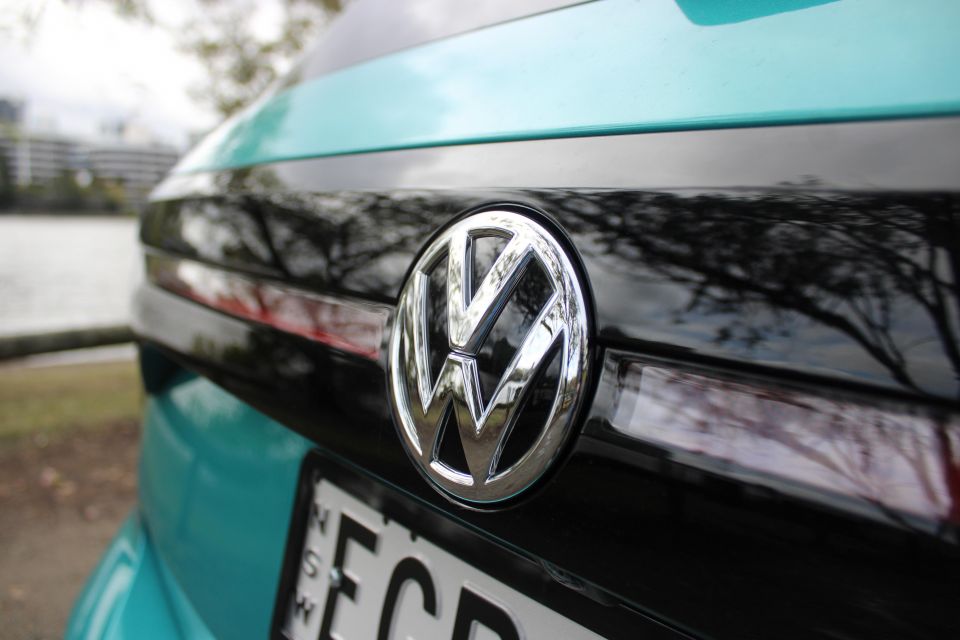

Volkswagen offers a five-year, unlimited-kilometre warranty and a five-year/75,000km servicing care plan, priced at $1800. That’s close to the cost of servicing a Nissan Juke or Kia Seltos 2.0-litre over the course of five years, though it’s around $400 more than a Hyundai Kona and a whopping $1000 more than a Toyota C-HR.
Service intervals are every 12 months or 15,000km, whichever comes first.
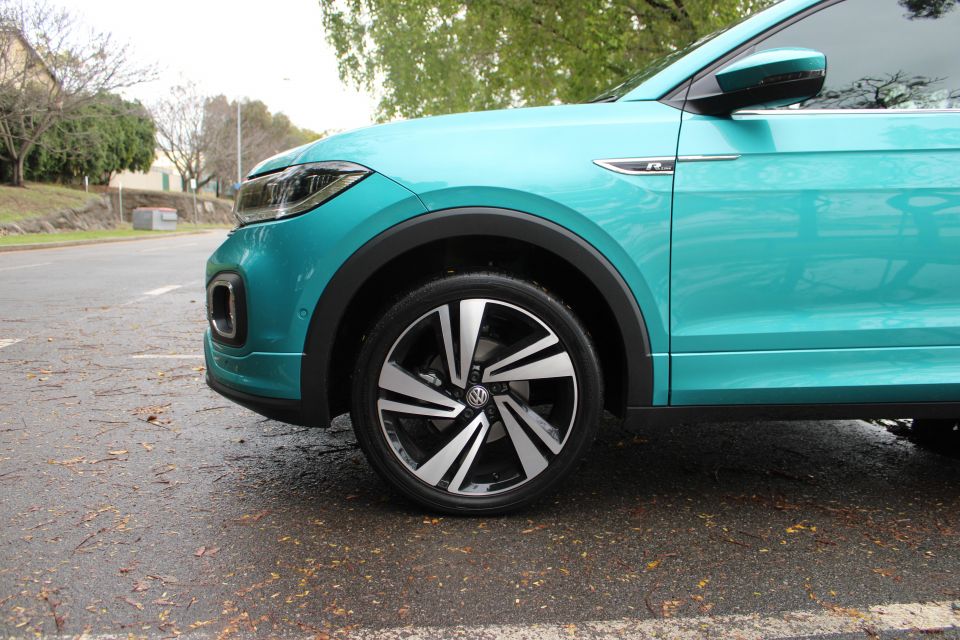
Buy your new car without the stress. It's fast, simple and completely free.

Great service from Travis and team, second time I have used this business would not hesitate to recommend them to anyone
Craig C.
Purchased a Ford Ranger in Sunshine Coast, QLD
CarExpert helped Craig save $7,224 on his Ford Ranger, now let us save you on your next new car.
Get your BEST priceThe T-Cross mightn’t have the quirky looks of a Juke or C-HR but its exterior design is sophisticated, while the turquoise paint and R-Line package really make it pop. We got attention from all sorts, including a young guy with model-good looks who called it “fresh”. Volkswagen should be happy.
The little SUV’s clean lines probably mean it’ll age better than some of its rivals.
But by the time all the option boxes were ticked on this T-Cross, it wore a sticker price of $36,190 before on-road costs. That’s getting up there for a light SUV, let alone a small one, even if it does have a Volkswagen badge. Opt only for metallic paint, the Digital Cockpit and excellent stereo and you’re looking at a more palatable $33,690.
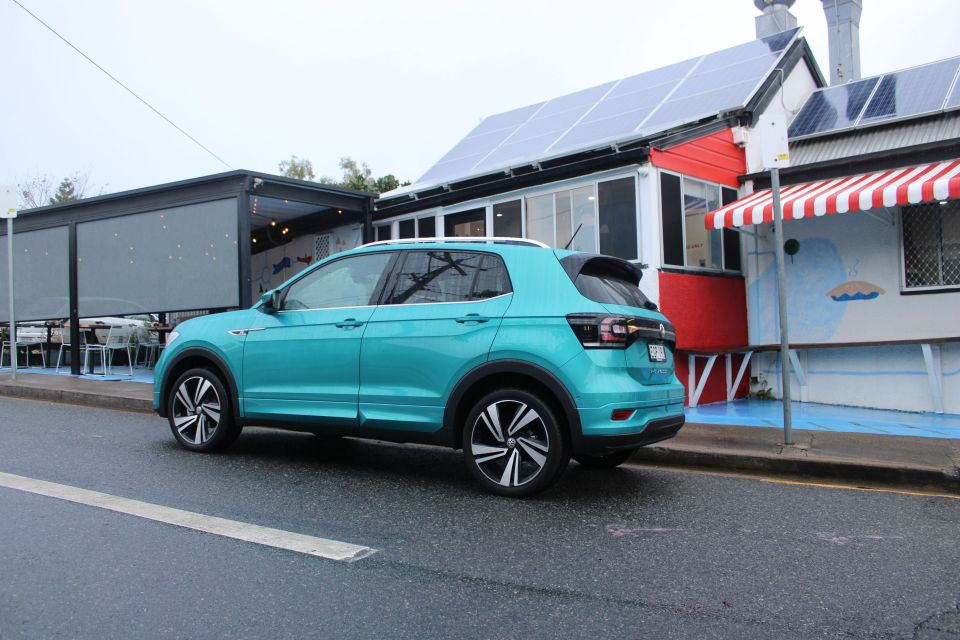
Volkswagen also gives you the option to add the Sound & Vision package to the base Life, while also offering adaptive cruise, blind-spot monitoring and semi-autonomous parking assist in a sharply priced $1200 option package.
That means if you can go without niceties like dual-zone climate control, you can have those important safety and convenience features in a Life for $1800 less than the Style.
Of course, you can get these features and the T-Cross’s excellent powertrain for thousands less again in a Polo. If the high hip point is important to you, though, the T-Cross’s surprisingly useable interior dimensions make this an excellent city runabout.
Where expert car reviews meet expert car buying – CarExpert gives you trusted advice, personalised service and real savings on your next new car.
William Stopford is an automotive journalist based in Brisbane, Australia. William is a Business/Journalism graduate from the Queensland University of Technology who loves to travel, briefly lived in the US, and has a particular interest in the American car industry.


Max Davies
5 Days Ago


James Wong
4 Days Ago


James Wong
3 Days Ago


Max Davies
2 Days Ago


Marton Pettendy
20 Hours Ago


Josh Nevett
19 Hours Ago